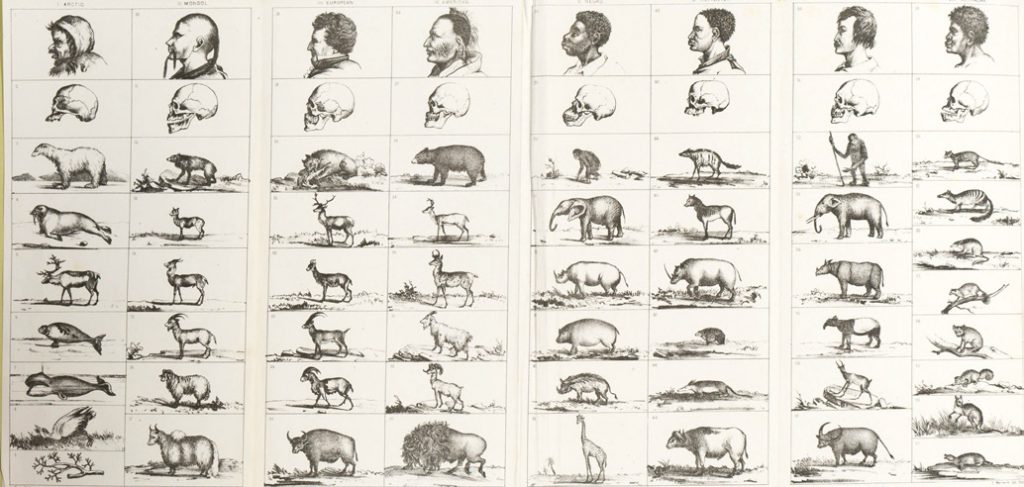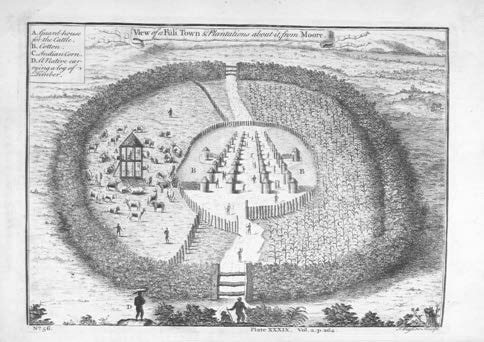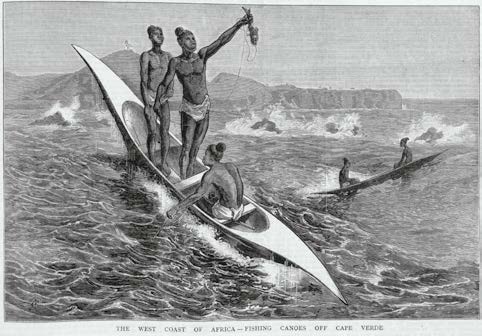The slave trade had short and long lasting effects on Africa, Europe and the Americas. African societies were profoundly disrupted by the slave trade. On a political level, it caused great instability with increasing social divisions, growth of armed conflicts, violence and abuse of power.
African aristocracies and elites satisfied the European demand for slaves by raiding and plundering weaker neighbouring societies. The large-scale introduction of European firearms, obtained in exchange for the sale of slaves, allowed some kingdoms – such as Dahomey or Asante – to strengthen their power and expand their influence.

Next to the king’s throne you can see the flags of Great Britain, Holland and Denmark
Thomas E. Bowdich, Mission from Cape Coast Castle to Ashantee, with a statistical account of that kingdom, and geographical notices of other parts of the interior of Africa, London, John Murray, 1819, pp. 274-54
Slavery Images
On a demographic level, the slave trade led to depopulation in vast areas of the continent. The many millions of human beings forced to leave Africa consisted mainly of young men and women of reproductive age, the healthiest and strongest elements of the local populations, who could have formed new families, thus contributing to the demographic, social and economic development of the continent. Furthermore, countless numbers of people lost their lives in the raids, on the voyages to the coast and during the Atlantic crossing.
On an economic level, the decline of the population combined with war and raids had a negative impact on agricultural and productive development. Being part of the global slave trade guaranteed African kingdoms and potentates new sources of wealth and power to the detriment of local development processes and social cohesion. Addressing domestic needs became less important than the international demand for enslaved human beings.
“Plate XXXIX” in Thomas Astley (ed.), A New General Collection of Voyages and Travels, vol. 2, London, Thomas Astley, 1745-1747, facing p. 264
Slavery Images
«The Graphic: An Illustrated Weekly Newspaper» (London), vol. 22 (1880), p. 653
Slavery Images
THE INVENTION OF RACE
One of the most powerful, destructive and persistent effects of the slave trade was the close association of the terms slave and black. For centuries, slavery had predominantly affected white populations and the very notion of white as opposed to black was not a significant source of identity.
The concept of race – which claims to describe, differentiate and hierarchize human groups on the basis of physical characteristics such as skin colour – established itself as a consequence of the slave trade and European colonial expansion. From the continuous confrontation with ‘the other’, Europeans began to build new identity categories on the basis of physical and cultural characteristics, the most powerful of which were the concept of race and the black/white opposition. Within these constructions, being a slave became inextricably linked to being black.
Far from representing biologically determined differences, totally disproved by contemporary science, the notion of race was the product of a historical development which, in the second half of the 18th century, made use of the scientific revolution to provide a presumed objectivity to a classification that soon expanded from skin colour to include moral, intellectual, psychological, and emotional characteristics.
The social order built on these foundations organised the ‘races’ within a hierarchical scheme, which presupposed the natural superiority of the white race, thus justifying its supremacy and the innate inferiority of blacks and non-whites in general.
Built up gradually in the Atlantic space of the modern age, the racial order has become a global order, which still today organises social, economic, cultural and labour relations.

Josiah Clark Nott, Types of Mankind…, Philadelphia, Lippincott and Grambo, 1854
Wikimedia Commons

